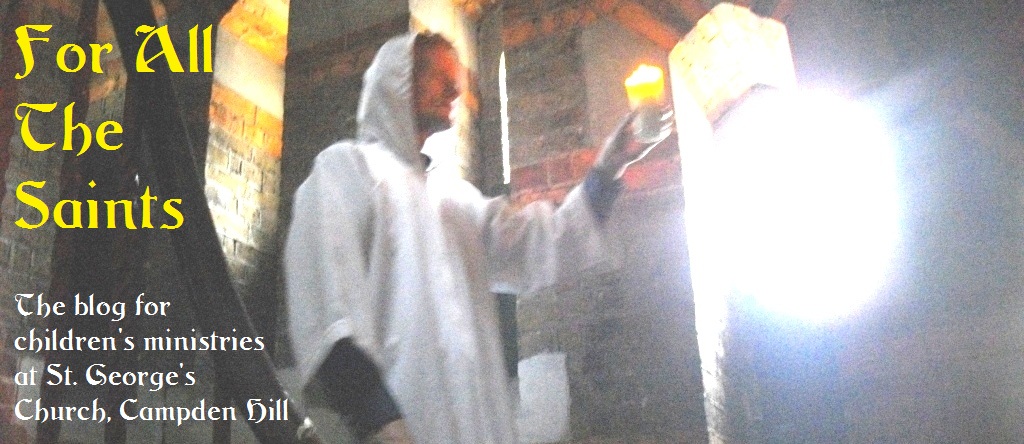But I can't in good conscience pretend that Adam and Eve is of the same historical veracity as Moses. I'm not a Biblical scholar - I don't know exactly what historical/archaeological evidence there is for the Exodus, but I know it's a hell of a lot more than there is for the idea of the Garden of Eden and the Fall. And from the perspective of textual analysis, Adam and Eve reads like a myth, while the Exodus reads like a history. For the younger kids, this isn't a stumbling block - they approach it all as a story that's more true than truth, and it all gets sorted out later on. But for the 10- and 11-year-olds, who might be starting to think "hey, wait a minute ..." about some of this stuff, based on what they might learn at school about evolution, or hear in the news about ranting Fundamentalists, or hear from their classmates, I want to be prepared for their questions. And I don't want the timeline to look like it's exactly the same as a timeline they might see in History class.
So I've made a poster to put at the end of the timeline (there are pictures in the real one):
Is the whole Bible true?
That depends. Parts of the Bible probably didn’t happen exactly as it says – for example, we know too much about evolution now to believe that Adam and Eve were real people. But somewhere, there were two people who were the first “real” humans – the first people to become aware of God. And the story of Adam and Eve can help us understand things about God, and about why the world is the way it is.
But the Bible isn’t all stories. There are also parts of it that are laws – rules for the societies people lived in at the time it was written. Some of these laws are very different from the laws we have now, and many Christians don’t follow these old laws. For example, there’s a rule in the Bible that we shouldn’t wear clothes made of more than one kind of material! I bet all of us have done that!
Jesus told us that God’s law was to love each other, and to love God. Many Christians believe that following this law is more important than paying attention to thousand-year-old rules about things like what clothes to wear and what food to eat.
